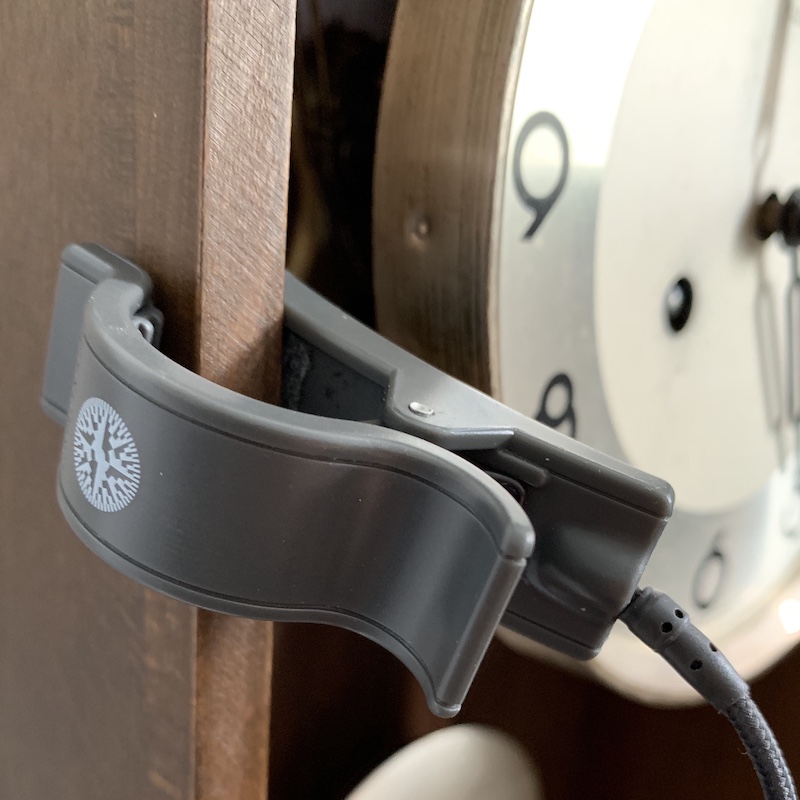


The internal and headset microphones work best in quiet environments. Ambient noise may affect the accuracy of the measurement and possibly skew the results. This is especially true when there are other clocks ticking in close proximity. In these situations it is best to use a vibration sensor or contact microphone. These are typically clamped to the movement plates or clock case and are least affected by background noise.
Peterson PitchGrabber is an inexpensive option, commonly used for violin tuning. Clip mount design with convenient long cable. Smartphone compatible, it plugs directly into iPhones with a headset jack, or to the lightning connector using an adapter.
(Click To Zoom)
Note that similar products such as Peterson TP-3 do not work with the iPhone.
> Peterson PitchGrabber <
> Apple Lightning Adapter <
(#ad)
As an Amazon Associate we earn from qualifying purchases.
A more advanced alternative to the PitchGrabber is the use of iRig 2 or iRig HD adapter. Despite a higher cost, it has built-in gain control and is compatible with standard 1/4" jack audio accessories. You can use it with any piezo acoustic sensor, even with the alligator pickup from a legacy timer or beat amplifier. When working with multiple clocks, you can permanently clip cheap piezos to each clock, and only connect the one being tested when needed.
(Click To Zoom)
Note that the older, tube-style iRig 1 does not work as it lacks gain control, plus there are many counterfeits on the market. The iRig 2 comes in analog or digital (lightning) variants.
> IK Multimedia iRig 2 (analog) <
> IK Multimedia iRig HD (digital) <
> Cheap Contact Microphone Pack of 5 <
(#ad)
As an Amazon Associate we earn from qualifying purchases.
ClockMaster (with iRig adapter) may also work with infrared proximity sensors. Here is a quick video for those interested in DIY.